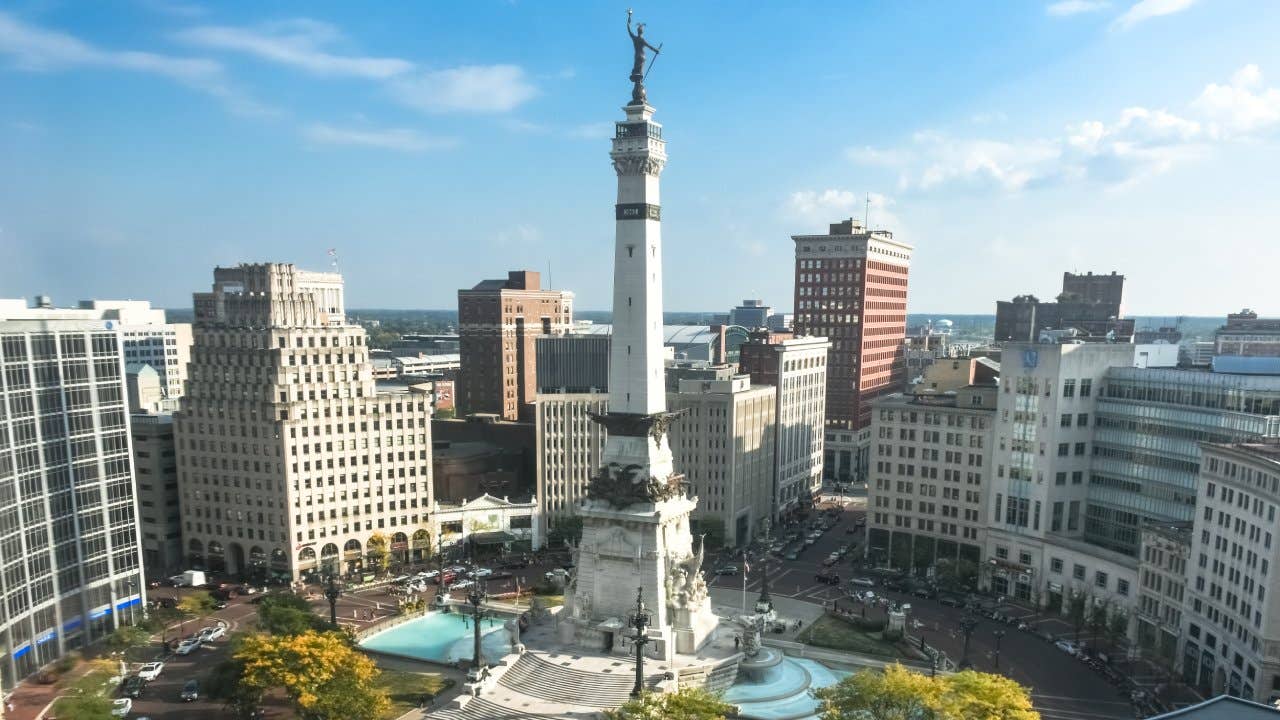Buying a house in Indianapolis: A how-to

The Bankrate promise
At Bankrate we strive to help you make smarter financial decisions. While we adhere to strict , this post may contain references to products from our partners. Here's an explanation for .
Indiana might be known as the Crossroads of America, but its capital city has plenty of reasons to stop and stick around. The cost of living here is much lower than most of its big-city peers, but you won’t sacrifice any of the cosmopolitan energy. With thriving neighborhoods like Fountain Square and Mass Ave, Indianapolis has been making a name for itself for much more than race cars. Read on for everything you need to know about buying a house in Indy.
Why buy a house in Indianapolis?
Indianapolis is many things: a blossoming arts center, a booming craft-beer scene, a sports lover’s paradise. But perhaps the biggest selling point is what Indy is not: expensive. Compared with high-priced coastal cities and even other Midwest hubs like Chicago, Indy is a budget-friendly spot to call home. The median price for a home here as of March 2023 is just $229,900, according to Redfin data — significantly lower than the nationwide median. And with Fortune 500 companies like Anthem and Eli Lilly headquartered here, it’s a good place for your professional growth, too.
Find an Indianapolis home for your budget
The entire Indianapolis area is easy on your wallet compared with much of the rest of the country. Data from the Metropolitan Indianapolis Board of Realtors (MIBOR) shows that the median sale price in Marion County stood at $230,000 in February. That’s quite a deep discount from the national median price tag of $363,000.
Of course, affordability is relative. As you think about buying a home, you need to make sure you aren’t going to stretch yourself too thin. Bankrate’s affordability calculator can help you crunch the numbers to get a realistic monthly payment for your income.
Is now a good time to buy a house in Indianapolis?
During the runup in pandemic-fueled prices, homebuying in Indianapolis was insanely competitive. In 2023, though, things are looking up for buyers. Homes are sitting on the market for much longer now — the median number of days on market is 22, per Redfin, which is still fast but a full 16 days longer than this time last year. In addition, MIBOR reports that homes are closing for around 3 percent less than the initial asking price. Buyers will still have to deal with the costs of higher mortgage rates, of course, but that’s the case all over the country — and you can always refinance down the road.
What to know about buying a house in Indianapolis
As you try to narrow in on the right place to call home in Indy, be sure to consider these important questions.
How long will your commute be?
The Indianapolis metro area is fairly large, and you won’t find many convenient public transit options. It’s a driving city — a natural description for a place known for the Indy 500. So, be sure to think about how much time you’re comfortable sitting in your car each day. If you’re working downtown, you might not want to deal with the traffic from Castleton.
How much will you pay in closing costs?
As you stash away money for a down payment, keep in mind that you’re going to need even more cash to cover your portion of the closing costs. Luckily, this won’t add much to your bill: Indiana’s closing costs are among the cheapest in the entire country, according to ClosingCorp. The typical sale comes with closing costs that are 0.9 percent of the purchase price, and there are no transfer taxes in the state. On a $230,000 sale, that comes to just $2,070 — a relative bargain in real estate.
How much will you pay in property taxes?
Your property taxes will depend on your specific part of the metro area, but Indiana’s property tax rates are fairly low. According to the Tax Foundation, the property tax rate here is 0.84 percent of assessed value, putting the state in the cheaper half of the country.
What else will you need to pay for as an Indianapolis homeowner?
You’ll want to protect your new investment in Indy, and Bankrate’s data shows that the typical homeowners insurance in the city costs $1,280 to cover a $250,000 property. And while Indiana is at risk for tornadoes — it averages 22 of them every year, according to the National Weather Service — you likely don’t need to pay for a separate tornado policy. Tornado-related damage is typically covered by most homeowners insurance policies. Some areas of the city are at risk of flooding, though, so be sure to check with your provider about coverage.
Tips for buying an Indianapolis home
Save for a down payment
How much cash will you need upfront? The answer depends on a few factors, most importantly how much the home costs and what kind of financing you’re using. Some loans require a down payment of just 3 percent of the purchase price — on a $230,000 home, that adds up to $6,900. Most homebuyers in Indiana contribute a bigger sum, though: The average down payment here last year was $17,000. And if you want to avoid paying for private mortgage insurance, you’ll likely have to put down 20 percent.
In addition to taking your own steps to save for a down payment, the state may be willing to lend a hand. Indiana’s homebuyer assistance programs include First Home, a forgivable second mortgage for first-time buyers, and Next Home, a program designed to help low-income buyers borrow funds for a down payment. You’ll need to meet certain income and purchase price limits, but these programs can make a big difference in your goal to buy a home.
Find a local Indianapolis real estate agent
Looking for a home in Indy on your own can feel like you’re driving the wrong way at the Indy 500. The right real estate agent can ride shotgun and help steer you through this complex process. As the market here evolves, a pro can also help you avoid common homebuyer mistakes and connect you with other important parties, like an attorney and a home inspector.
Get preapproved for a mortgage
There’s one essential piece of information to have in your hand when you’re ready to start house hunting in Indy: a preapproval letter. Any seller is going to want to see that a lender is likely to loan you the funds you need to make a deal happen. Be prepared to hand over a range of documentation about your finances, including pay stubs, tax returns and bank statements.
When you’re ready to apply for real, compare multiple lenders in Indiana — not just the company that issued your preapproval — to see where you’ll find a combination of low fees, competitive rates and top-notch customer service.
Understand the playing field
Indianapolis is still a fairly hot market compared with many other parts of the country. In fact, a recent Redfin report found that 54 percent of its offers there faced at least one competing bid. In addition, the city is still seeing purchasing activity from Opendoor and Offerpad, the two biggest names in iBuying, so some sellers may be tempted to take advantage of the quick-and-easy route to a deal.
FAQs
-
Based on limited inventory, Indy is technically a seller’s market. But it’s actually becoming a much better time to be a buyer, provided you’re comfortable in the current mortgage rate climate. Home prices here are much more affordable than the nationwide median price, and they are selling for around 3 percent less than asking price in Marion County right now, according to central Indiana’s Realtor’s association. Plus, homes are spending a longer time on the market than a year ago, which can give you more bargaining power with a seller on a tight timeline.
-
Yes. While housing prices have increased in Indianapolis over the past few years, they are still relatively low, and this is still one of the most affordable big cities in the country. In comparison with other big Midwestern hubs, Bankrate’s cost of living calculator shows that Indy is 23 percent cheaper than Chicago and 11 percent cheaper than Detroit.
Related Articles



